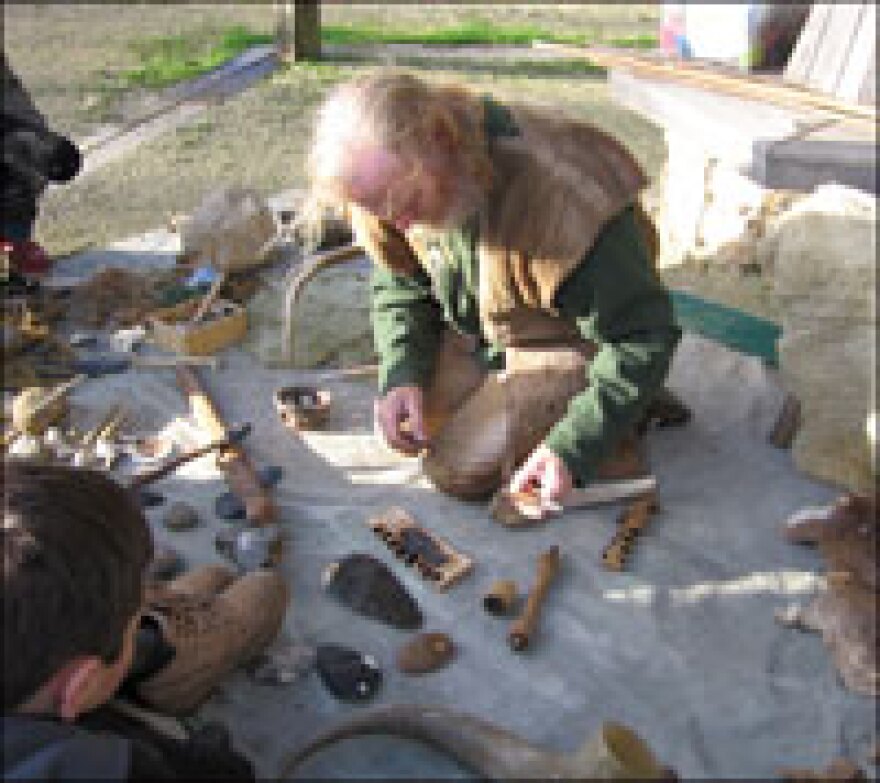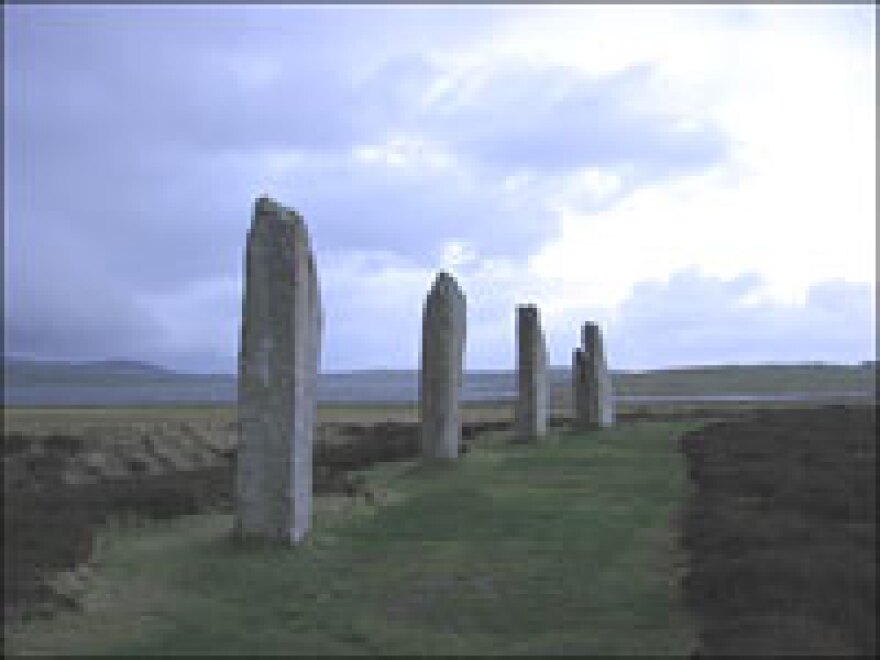


There's a child's toy called "Etch a Sketch." Perhaps you remember it? You use it to make intricate designs on a screen, then give the screen a shake — and your drawings disappear.
That's pretty much what happened to Northern Europe and the British Isles during the last ice age. For the past 10,000 years or so, Britain's climate has been welcoming and it has allowed humans to comfortably settle in. But during the last ice age, these areas were uninhabitable.
"It's very cold, [and] it's treeless," says Clive Gamble, an archaeologist at the University of London. "In some places, it's described as polar desert. It's not somewhere you'd want to be."
There were early humans in Britain before the ice arrived, but when it got too cold, they fled to Southern France and Spain.
After a while, the ice began to melt, and Gamble says the humans began to see Northern Europe as habitable — it was "a brave new world," he says.
Things were comfortable down in Southern France and Spain, so why did people head into the complete unknown up North? Perhaps people just need to explore wherever the climate lets them.
"What we're getting is some tantalizing glimpses," Gamble says, "that actually they start to look into these northern areas long before the plants and the animals have really returned there in sufficient numbers."
Humans explored this brand-new real estate and then gradually moved their families. By the time the whole clan had settled in, the warm climate had attracted a rich supply of fauna — reindeer, horses, bison and mammoths.
The settlers were always developing new technologies to help them hunt. John Lord helps modern-day humans get a taste of prehistoric times by making Stone Age tools and demonstrating their uses.
Lord looks like he just stepped out of a caveman diorama. He has wild hair and a long beard. He wears animal skins for clothes, and has a flint knife stuck into his leather belt.
"I'll introduce you to a Stone Age mobile phone," he tells a group of elementary school students watching his demonstration.
He holds up a large animal horn.
"If you blow a raspberry into it," Lord says, "it makes a noise like a mammoth."
It's the perfect trick for bringing a large beast into spearing range.
"If you're not as hungry," Lord says, "you can make a different noise — wild boar."
With a stable climate, our early ancestors had the time to improve on their tools; heavy flint hand axes gave way to lighter blades attached to wooden handles.
Less than one mile from where Lord is talking with the schoolchildren, there's a limestone ravine known as Creswell Crags.
There are caves at Creswell where ancient hunters retreated to enjoy their mammoth steaks and take refuge from the cold. If you look closely, you can see something uniquely human that they left behind: Hidden in a dark spot on the ceiling of a cave, there is a drawing of what is thought to be an ibis.
Ian Wall, the chief archaeologist at the Creswell Crags Visitor Center, says archaeologists had been coming to the site for more than 100 years before the material was spotted.
To tell the truth, the ibis isn't really much of a drawing. But it gives a sense of what was to come.
Humans continued to search for the good life; they even sought opportunities for leisure activities.
This exploration took humans to the Orkney Islands, north of Scotland. Once upon a time, the climate here was actually warmer than it is today — so comfortable, in fact, that some of the nomadic hunters stopped their wandering ways and put down roots.
There was abundant seafood, and because Orkney has virtually no trees, starting a farm was a snap. Luckily for archaeologists, the lack of trees also meant everything was built out of stone — and was therefore pretty permanent.
The Stone Age village of Skara Brae is an example of what a stable climate makes possible. Skara Brae is a planned community dug into a dune along the beach. It was built about 5,000 years ago.
At the entrance to the village, there is a narrow central passage with apartments on both sides. Julie Gibson, an archaeologist with the Orkney Archaeological Trust, points out one of the apartments:
"Looking down from the top," Gibson says, "we can see the big bed on the right, the dresser in front of us, the little bed on the left, and all the little cupboards and things which maybe you put you're milky drink in when you went to bed at night."
The architects of Skara Brae liked order; all of the rooms basically have the same layout.
As people began living in more complicated societies, ritual became more important. The Ring of Brodgar is a Neolithic stone circle on the Orkney Islands. It sits atop a hill, surrounded by a mix of freshwater lakes and ocean.
It is estimated that the circle of stones was erected between 2500 BC and 2000 BC. The 104-meter-wide circle originally contained 60 megaliths, of which 27 are still standing today.
It is an impressive jump from a simple cave drawing to a massive stone circle. Yet, as the climate remained stable for thousands of years longer, the stone circle led to pyramids and temples and cathedrals and who-knows-what to come next — provided that climate change doesn't wipe the slate clean.
Produced by Rebecca Davis
Copyright 2023 NPR. To see more, visit https://www.npr.org. 9(MDM3NjYwMjA5MDE1MjA1MzQ1NDk1N2ZmZQ004))



